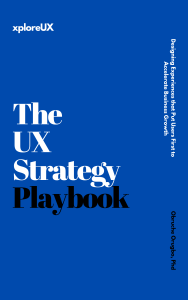
Personalisation has become one of the most influential forces shaping today’s digital world. From the moment you open a shopping app to when you stream your favourite series, personalisation and adaptive user experiences are quietly working behind the scenes to tailor your digital environment. This shift isn’t just about convenience—it’s about creating experiences that feel intuitive, relevant, and human.
Modern UX design is now deeply intertwined with personalisation. Brands use algorithms to predict user preferences, recommend products, and adjust interfaces in real time. This approach has changed how people interact with technology, setting new standards for usability and satisfaction. As AI systems get smarter, the potential for AI-driven personalisation continues to expand—making experiences more dynamic and engaging than ever before.
Hyper-personalised UX goes beyond simple customisation. It combines behavioural data, contextual awareness, and predictive analytics to deliver digital experiences that adapt moment by moment. For example, a music app that recognises your mood and adjusts playlists accordingly, or an e-commerce site that suggests products based on your browsing habits and location, both use this principle.
This form of adaptive user experience uses real-time data to fine-tune every interaction. The result? Higher user engagement, stronger brand loyalty, and smoother customer journeys. Studies show that AI-driven personalisation can increase engagement by up to 80%. That figure highlights just how powerful personalisation has become in influencing user satisfaction and business performance.
Yet, the success of hyper-personalised UX depends on thoughtful UX research. Designers and researchers now focus on understanding how different audiences interpret and respond to personalisation. They segment user data, test multiple variations of content through A/B testing, and observe how context—such as device type, time of day, or emotional state—affects the experience.
The concept of an adaptive UI takes personalisation a step further. Instead of offering static layouts, adaptive interfaces automatically adjust based on user needs or environmental factors. For instance, a travel app might simplify navigation when it detects poor network coverage or switch to dark mode in low light.
Such interfaces use machine learning to learn from user behaviour. Over time, they adapt layouts, language, and even functionality to match individual preferences. This seamless evolution allows users to interact with products that feel designed just for them. It represents a key trend in UX design, one that aligns closely with the human desire for relevance and ease.
However, adaptive design isn’t only about convenience—it’s about reducing friction. When users feel that an interface understands them, they experience less cognitive load and greater satisfaction. That’s why UX research increasingly studies adaptive behaviour, analysing how users respond to subtle design changes that anticipate their intentions.
Artificial intelligence is the driving force behind modern personalisation. By analysing massive amounts of user data, AI systems detect patterns and make intelligent predictions about what users might want next. These insights enable companies to deliver tailored recommendations, personalised emails, and dynamic interfaces at scale.
Machine learning models now power much of AI-driven personalisation, making it possible for platforms like Netflix, Amazon, and Spotify to predict user behaviour with remarkable accuracy. But beyond entertainment and shopping, AI is transforming how healthcare, education, and finance deliver experiences too. Adaptive dashboards, customised learning paths, and predictive financial advice all rely on similar data-driven principles.
Still, with great power comes great responsibility. AI systems must be designed transparently and ethically. Without clear safeguards, personalisation can easily become invasive or manipulative, eroding user trust.
The ethical side of personalisation has become a major focus in UX research. Users are more privacy-conscious than ever, and global data protection laws such as GDPR have set strict boundaries for how personal data is collected and used. The challenge for designers and businesses is clear: how to create adaptive user experiences that respect privacy while still providing value.
Ethical UX design begins with transparency. Users should always understand what data is being used and how it benefits their experience. Clear consent mechanisms, data anonymisation, and opt-out options are essential to maintaining trust.
Another ethical consideration is the prevention of filter bubbles—when personalisation narrows a user’s exposure to information, reinforcing biases instead of expanding perspectives. Designers and researchers now explore ways to introduce diversity into personalised systems, ensuring that adaptive interfaces don’t limit choice but enhance discovery.
Responsible personalisation isn’t just about following the law—it’s about aligning technology with human values. Brands that master this balance can provide deeply personal experiences without compromising integrity.
Behind every successful personalisation strategy lies rigorous UX research. Researchers use a mix of qualitative and quantitative methods to understand how users perceive tailored experiences. Techniques such as user interviews, analytics tracking, and usability testing reveal how effective personalisation truly is.
Segmentation plays a central role. By dividing users into specific behavioural or demographic groups, designers can fine-tune experiences to suit each group’s needs. For example, new users might see guided tours, while returning users receive shortcuts to favourite features.
Another vital tool is A/B testing. By comparing different personalised experiences, teams can measure which versions improve engagement or retention. These tests often uncover subtle but powerful insights—like the impact of timing, colour changes, or copy tone on conversion rates.
Finally, context-aware design allows adaptive user experiences to respond to a user’s environment in real time. This might involve location-based adjustments, device detection, or language adaptation. Together, these techniques create a feedback loop where data continually refines design decisions, keeping personalisation relevant and responsive.
The benefits of hyper-personalised UX extend to both users and businesses. For users, personalisation offers relevance. It saves time, reduces effort, and makes interactions feel meaningful. Instead of being bombarded with irrelevant content, users receive information that aligns with their interests or goals.
For businesses, AI-driven personalisation is a proven growth strategy. Higher engagement rates translate to longer sessions, stronger loyalty, and increased conversions. E-commerce platforms, for example, report significant rises in revenue when product recommendations are tailored to individual shoppers.
In customer service, personalisation improves communication. Chatbots that remember previous interactions or adapt their tone to user mood create smoother, more human experiences. In education and healthcare, personalisation can even improve learning outcomes or patient satisfaction.
This mutual value exchange—users providing data and receiving better experiences in return—is what makes personalisation such a powerful force in modern UX design.
While personalisation offers immense potential, scaling it presents major challenges. Managing large volumes of user data demands robust infrastructure and advanced data science capabilities. Companies must ensure that algorithms remain fair, unbiased, and accurate across diverse populations.
Another challenge is maintaining a balance between personalisation and user autonomy. Too much automation can make users feel manipulated or monitored. Adaptive user experiences must strike a balance—helpful, but not overbearing.
Consistency is another concern. Personalised systems must ensure that updates and changes don’t confuse users or disrupt familiar patterns. That’s why ongoing UX research and testing are essential to maintaining harmony between personalisation and usability.
Looking ahead, adaptive user experiences will become more seamless, predictive, and emotionally intelligent. Future systems will detect not only what users do but how they feel. Emotional AI and sentiment analysis could allow products to respond empathetically—offering encouragement during frustration or simplifying options during cognitive overload.
We’ll also see cross-platform personalisation evolve. Instead of tailoring individual apps, brands will create ecosystems where preferences follow users across devices and contexts. Imagine a fitness app that syncs with your grocery list or a productivity tool that adjusts your schedule based on your energy levels.
Yet, the future of hyper-personalised UX must remain human-centred. The goal is not to replace user choice but to enhance it. As technology becomes more adaptive, the designer’s role will shift toward shaping the boundaries of automation—deciding when and how to personalise responsibly.
Trust will continue to define the success of AI-driven personalisation. Users must feel confident that their data is handled securely and used for genuine benefit. Companies that communicate openly about their personalisation strategies will gain an edge in credibility.
Simple design practices—like clear data permissions, accessible privacy dashboards, and visible explanations for recommendations—help build this trust. When users can see and control the factors shaping their experiences, they’re more likely to engage deeply.
Transparency doesn’t weaken personalisation; it strengthens it. It creates a relationship based on honesty rather than manipulation, ensuring that UX design remains rooted in empathy and respect.
The rise of personalisation and adaptive user experiences marks a defining chapter in the evolution of UX. As digital products learn to think and adapt like humans, designers face a new challenge: creating intelligent systems that are both effective and ethical.
Hyper-personalised UX has already changed how we shop, learn, and connect. With AI-driven personalisation, businesses can deliver extraordinary engagement, while users enjoy smoother, more meaningful experiences. But personalisation must remain guided by empathy, transparency, and consent.
The future of UX design depends on this balance. By blending technological sophistication with human understanding, we can build adaptive experiences that not only anticipate needs—but respect individuality.
- UX247 (2025). Personalisation and Adaptive User Experiences. Retrieved November 2025.
- UserGuiding (2025). AI-Driven Personalisation Statistics and Insights. Retrieved November 2025.
- Nielsen Norman Group (2024). Personalisation in UX: Designing Responsibly for User Trust.
- Interaction Design Foundation (2024). Adaptive Interfaces and Context-Aware UX Research.
- Smashing Magazine (2024). Balancing Personalisation and Privacy in Modern UX Design.








